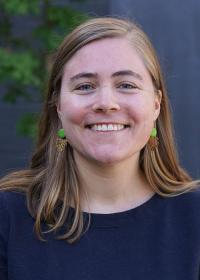What motivated you to pursue a PhD in biostatistics?
When I applied, I was in a masters-level job in global health research. I was using statistics regularly in my work, but did not feel like I had expertise in statistics. I was always curious to learn more, and to try to do my research with statistical integrity, and this motivated me to continue my education in biostatistics. My undergraduate degree was in mathematics, and I love that in biostatistics there is the opportunity to use those quantitative skills in applications that feel meaningful.
Why UW Biostatistics and not another university?
Because I had done my MPH at UW, I already had a strong connection to the UW School of Public Health and to Seattle in general so it’s not surprising that I gravitated back to UW. However, my decision was also based on how rigorous the UW coursework and training are and how friendly and welcoming I felt the student community to be. When I spoke with current students on visit days I felt right at home!
How would you describe your experience as a UW Biostatistics student?
When I look back on my first two years, it is incredible to me how much I have learned. It has been, at times, very challenging and a lot of work, but I now have confidence as a statistician, which is what I hoped to achieve as a student in this program.
I have also found connections with other students and faculty in the department to be a valuable part of the experience because I always learn something from hearing how someone else approaches a problem and because I know these connections will be important throughout my career.
What research are you currently conducting?
In the last year I have been a research assistant with Tom Fleming where I've worked on a simulation study to compare statistical methods for analyzing recurrent event data. Conducting reliable medical research relies on using statistical methods which are appropriate and well justified for a particular study. My research will help inform this decision-making for future clinical trials studying repeat events, such as COPD or asthma exacerbation events, multiple reinfections, or repeated injuries.
My work involves contributing to the scientific direction of our study, executing the simulations with R code, communicating with collaborators on the project, and writing up our findings for publication. I also attended the American Statistical Association Biopharmaceutical Section Regulatory-Industry Statistics Workshop in September to give a presentation about this research.
I’ve also been working with Jon Wakefield since I started the program. In my first year, I contributed to a large collaborative project to use household survey data and Bayesian small area models to produce subnational estimates of child mortality rates for the United Nations Inter-agency Group for Child Mortality Estimation.
More recently, I’ve focused on national-level child mortality estimates. We hope to revisit the current UN model and propose improvements with respect to (a) the temporal smoothing component, (b) the simultaneous estimation of the multiple age groups of interest, and (c) the synthesis of many complex source types each with their own biases.
My research on child mortality estimation contributes directly to official global health estimates, which are used by national and international agencies, researchers, and other public health professionals worldwide. Child mortality rates are important indicators of public health and are included in international objectives such as the UN Sustainable Development Goals. However, relevant data can be sparse and complex, particularly for low- and middle-income countries. This necessitates statistical modeling to estimate the indicators and track progress towards these goals.
What are your future plans?
Truthfully, I am not sure what my future plans are! But I am excited that statisticians can find homes in so many different sectors, often in really cool interdisciplinary and collaborative roles.
What advice would you give to a student who is considering a UW Biostatistics program?
I think the most important thing when considering graduate programs is to speak with current students. Even better if they are students working with faculty members whose research you are interested in. I’d also suggest that they not underestimate how important it can be to their graduate school success to live somewhere that makes them happy. I love Seattle and think it has a lot to offer for people with all sorts of interests!

